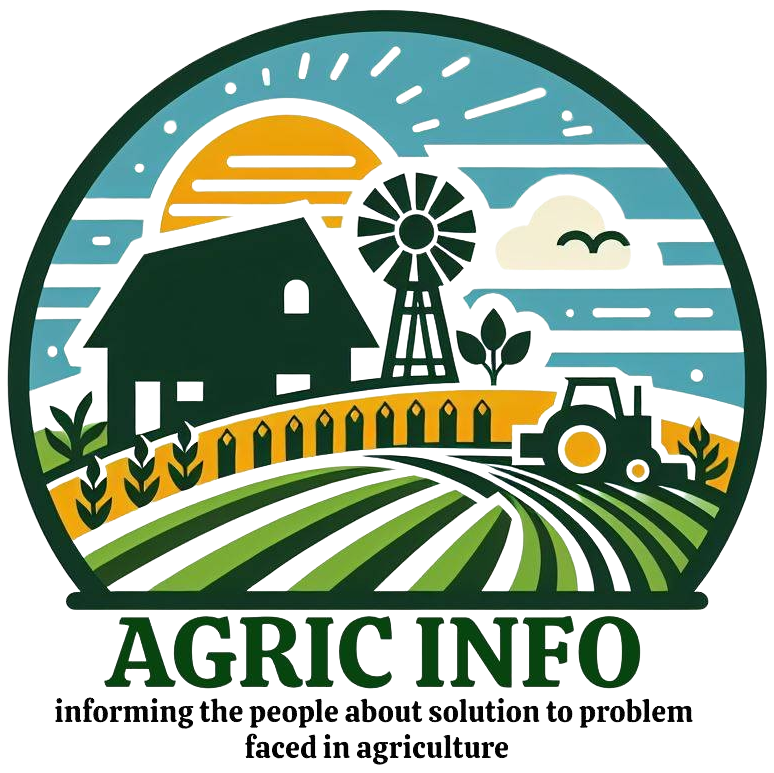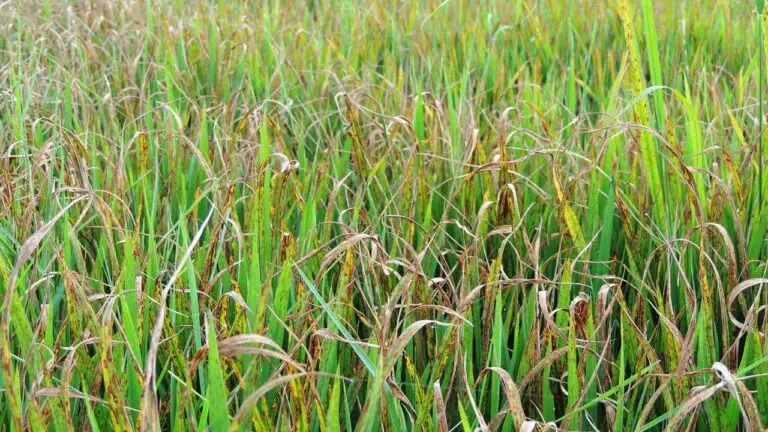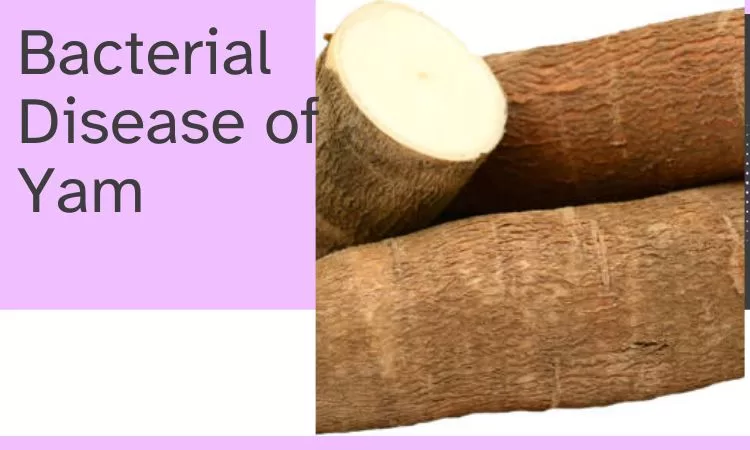Rosette Disease of Groundnut
Rosette disease of groundnut, otherwise called peanut rosette disease, is a devastating fungal infection that affects the growth and development of groundnuts. GRV, a satellite RNA, and groundnut rosette assistor virus cause this disease.
Groundnut, peanut, or goober is a vital oilseed crop cultivated worldwide. It is a rich source of protein and oil and is used in various food products. However, rosette disease can severely impact the yield and quality of groundnut crops, leading to significant economic losses for farmers.
This disease can significantly impact crop yield and quality, leading to substantial economic losses for farmers. In this article, we will explore the leading causes of rosette disease in groundnuts, how to control them, and other relevant information.
What Causes Rosette Disease of Groundnut?
Rosette disease of groundnut is caused by a combination of several causal agents, primarily viruses. The main virus species responsible for this disease are:
- Peanut Rosette Virus (PeRV): This virus is the primary cause of rosette disease in groundnut. An insect vector transmits it called the aphid (Aphis craccivora). PeRV infects the plant’s vascular system and affects its growth and development.
- Groundnut Rosette Assistor Virus (GRAV): This virus acts as an “assistor” to PeRV, enhancing its virulence and the severity of rosette symptoms. Aphids also transmit GRAV.
- Groundnut Rosette Umbravirus (GRV): This virus is a satellite RNA associated with PeRV. It does not cause any symptoms but enhances the severity of rosette disease when present along with PeRV.
The Role of Environmental Factors
Several environmental factors contribute to the development and spread of rosette disease. The disease incidence and severity are influenced by temperature, humidity, and rainfall patterns. High temperatures and low humidity create favorable conditions for rosette disease transmission and development. Excessive rainfall and prolonged periods of moisture also create a conducive environment for the disease to thrive.
The Impact of Host Plant Resistance
Groundnut varieties differ in their susceptibility to rosette disease. Some cultivars exhibit a higher resistance level, while others are more susceptible. The presence of resistant varieties is crucial in managing the disease. Using resistant cultivars can significantly reduce the incidence and severity of rosette disease, providing a sustainable and cost-effective solution for farmers.
How Does the Virus Infect Groundnut Plants?
The virus responsible for rosette disease moves within the plant’s vascular system, multiplying and spreading throughout the plant. It affects various plant tissues, including leaves, stems, and reproductive organs. Infected plants exhibit distinct symptoms, such as downward curling of leaves, stunting, excessive branching, and forming small, rosette-like clusters. These symptoms make it challenging for infected plants to produce healthy pods, reducing yield and quality.
How Do You Control Groundnut Rosette Disease?
Controlling groundnut rosette disease requires a multi-faceted approach that includes cultural and chemical management strategies. Here are some effective methods to prevent the spread and impact of the disease:
● Use Virus-free Planting Materials
● Crop Rotation
● Aphid Control
● Resistant Varieties
● Sanitation
● Cultural practices
● Chemical Control
1. Use Virus-free Planting Materials
Start with healthy seedlings free from rosette disease-causing viruses. This can help reduce the initial inoculum and prevent the spread of the disease.
2. Crop Rotation
Rotate groundnut crops with non-host crops to reduce the build-up of viruses in the soil. This break in the disease cycle can help decrease the incidence of rosette disease.
3. Eliminate Weed Hosts
Weeds can act as alternative hosts for the groundnut rosette virus, facilitating its spread. It is essential to regularly remove weeds from the field to minimize the risk of infection.
4. Aphid Control
Aphids are the primary vectors of the viruses causing rosette disease. Implement aphid control measures such as insecticide sprays or beneficial insect releases to manage aphid populations and reduce virus transmission.
5. Resistant Varieties
Plant groundnut varieties are resistant or tolerant to rosette disease. These varieties have genetic traits that allow them to withstand virus infections and minimize the severity of symptoms.
6. Sanitation
Remove and destroy plant debris after harvest to eliminate virus reservoirs. Proper sanitation practices can help reduce the survival and spread of the disease-causing agents.
7. Cultural Practices
Adopt good agricultural practices, such as proper spacing, adequate nutrition, and irrigation management, to enhance plant vigor and resilience against rosette disease.
8. Chemical Control
In severe cases, when cultural practices alone are insufficient, you can use chemical control measures to control the roselle disease of groundnuts. Consult with agricultural experts or local authorities for recommended chemical treatments.
The Symptoms of Rosette Disease of Groundnut
The following are the four (4) symptoms of rosette disease:
● Leaf Rosetting
● Flowers and pods
● Stunted growth
● Late-season symptoms
1. Leaf rosetting
One of the most obvious symptoms is the rosetting or bunching up of leaves at the top of the plant. Infected plants display an abnormal growth pattern, with short internodes and a compact appearance. The leaves appear small and distorted and have a pale green to yellowish color.
2. Flowers and Pods
Infected plants may produce fewer flowers, and the ones that appear are usually small and chlorotic. The pods also show symptoms, with a reduced size, deformation, and aborted development. Yield loss is a significant concern for farmers affected by rosette disease.
3. Stunted Growth
Infected plants exhibit slower growth and are often shorter than healthy plants. The overall plant vigor is compromised, resulting in lower productivity and poor-quality groundnuts.
4. Late-season symptoms
In some cases, symptoms may not be apparent during the initial stages of infection. However, as the season progresses, infected plants may show a significant decline in overall health. The foliage becomes further distorted, and the yield is severely impacted.
Why are these symptoms significant?
Identifying and understanding the symptoms of rosette disease is crucial for effective management and control strategies. Early detection allows farmers to take prompt action and minimize the spread of the disease. By recognizing the symptoms, farmers can implement preventive measures and make informed decisions regarding their groundnut crops.
Rice Diseases and their Control
How does rosette disease affect groundnut production?
Rosette disease has a detrimental impact on groundnut production. The reduced yield and poor quality of groundnuts lead to financial losses for farmers. Additionally, the disease affects the crop’s nutritional value, making it less desirable for consumption.
Aphids spread groundnut rosette virus, which acts as vectors for the disease. The virus can be transmitted from infected plants to healthy ones through the feeding activities of aphids. Once a plant is infected, the virus rapidly multiplies and spreads within the plant, causing the characteristic symptoms of rosette disease.
wrap up
Rosette disease significantly threatens groundnut production, impacting yield and quality. Understanding the causes of this devastating disease is crucial for developing effective management strategies.
We have successfully mentioned how you can prevent the rosette disease of groundnuts. By considering them, such as utilizing resistance, managing aphid vectors, and implementing proper cultural practices, farmers can minimize the impact of rosette disease and maintain healthy groundnut crops.
Remember to treat them (rosettes) when you see the symptoms. Please don’t wait until they wither.





